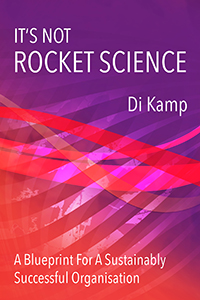Last month I looked at ways of helping yourself to work more in the flow of how you work best. This month I want to look at some of those things that stop us from applying those principles.
Let’s start with the problems we cause ourselves! We often don’t allow ourselves a realistic amount of time to be able to think about what we’re doing.
Weekly Planning
Taking a bit of time to plan your week can pay off enormously. I don’t mean that long list of things to do; I mean getting clear in your own mind where the different things to do fit in to your week. There are a couple of things to bear in mind when doing this:
- Where possible, put different things in slots that match with the type of thing it is, and the best times (see last month)
- Keep it realistic. Are you really going to feel like writing that report after 4 back-to-back meetings? Can you really do those 6 things in the hour you allotted to them?
Making an overall plan for the week helps you to build in some of those things that do matter, but often drop off the list: starting something before the deadline looms; preparing properly for an important meeting; spending a bit of time with a colleague that isn’t driven by an urgent request. It also helps your mind-set for the week, by giving you a clear intention rather than ‘just getting it all done’.
Daily Planning
Applying the same principle on a daily basis also helps. Just take 5 minutes at the end of the day to check out where you are up to. Don’t forget to be pleased with yourself for what you have achieved or made progress on – that gives you a bit of a boost!
Then assess what didn’t get done, and whether it is possible to fit it in to the next day, or if you need to reassign the tasks for that day. By taking a moment to do this, you set yourself up to be ready to go the next day.
Moving
During the day, we often spend the majority of our time sitting – and even worse, in front of a computer! I talked last time about knowing when to stop because you’re no longer being effective. We are not designed to just sit all day, so when you ‘run out’, move. There is a lot of research that suggests that most of us don’t move enough, and that it adversely affects our health, and it is a good way to help yourself to recover your flow. When the body moves, the mind tends to ‘unstick’ itself as well. If you feel you need a reason to get up from your desk, go for a pee or to rinse your face, make a cuppa, pick up some papers and walk briskly through the office – it all helps!
Interruptions
Those are all the things we can do something about, but what about those interruptions that disrupt our train of thought or our concentration?
- If you operate an ‘open door’ policy, remember that it doesn’t have to be ‘open all hours’! You can allocate times when it’s OK to interrupt in a day, and make that clear to others.
- You can move away from your usual space to do work that requires concentration for an hour or two to the café, a meeting room, or work from home.
- You can ask the person if their query could wait for 30 minutes, so you can pay them proper attention.
- And turn the ‘ping’ off that signals emails or texts arriving!
Applying the principles of working smarter
It can be hard to be the one who isn’t rushing, busy, stressed, if that’s the general environment you’re in. You feel guilty for being less ‘busy’ than the others. So experiment with introducing just a few more of these ideas into your day; change it a bit at a time. And notice the positive effect on you, and on others. I guarantee you will feel better, and others will benefit from you being more present when you’re with them.
Go on, work a bit smarter – you deserve it!



